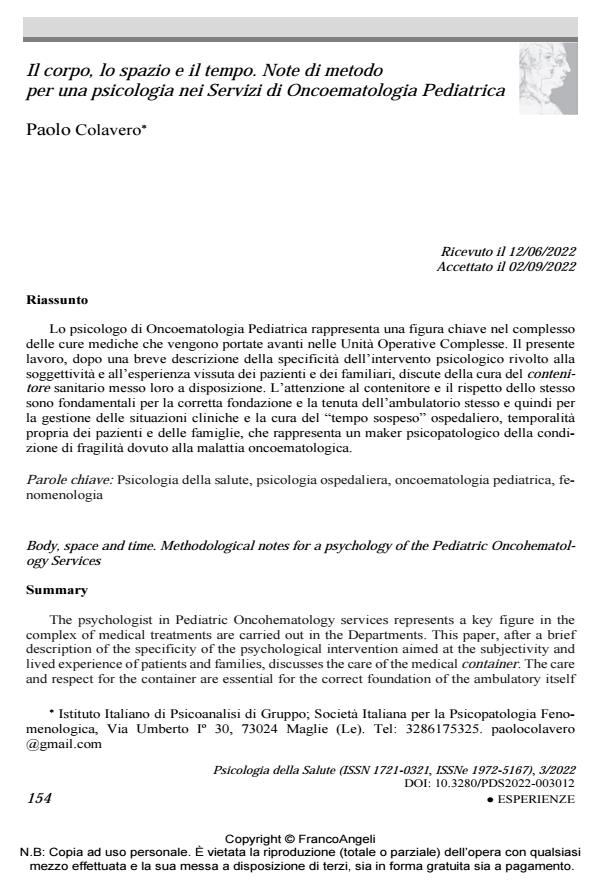Body, space and time. Methodological notes for a psychology of the Pediatric Oncohematology Services
Journal title PSICOLOGIA DELLA SALUTE
Author/s Paolo Colavero
Publishing Year 2022 Issue 2022/3
Language Italian Pages 14 P. 154-167 File size 222 KB
DOI 10.3280/PDS2022-003012
DOI is like a bar code for intellectual property: to have more infomation
click here
Below, you can see the article first page
If you want to buy this article in PDF format, you can do it, following the instructions to buy download credits

FrancoAngeli is member of Publishers International Linking Association, Inc (PILA), a not-for-profit association which run the CrossRef service enabling links to and from online scholarly content.
The psychologist in Pediatric Oncohematology services represents a key figure in the complex of medical treatments are carried out in the Departments. This paper, after a brief de-scription of the specificity of the psychological intervention aimed at the subjectivity and lived experience of patients and families, discusses the care of the medical container. The care and respect for the container are essential for the correct foundation of the ambulatory itself and the management of clinical situations and therefore for the treatment of hospital "suspended time" ‒ peculiar lived time of patients and families ‒ which represents a psychopathological maker of the condition of fragility due to oncohematological disease.
Keywords: Health psychology, hospital psychology, pediatric oncohematology, phenomenol-ogy
Paolo Colavero, Il corpo, lo spazio e il tempo. Note di metodo per una psicologia nei Servizi di Oncoematologia Pediatrica in "PSICOLOGIA DELLA SALUTE" 3/2022, pp 154-167, DOI: 10.3280/PDS2022-003012